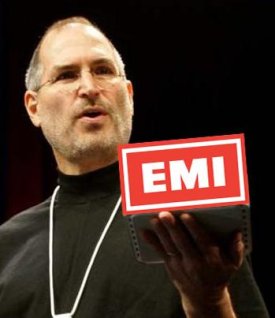Mon 21 Jul 2008
Apple iPhone Customer Support Rules!
Posted by boz under Computing , General , TechnologyComments Off on Apple iPhone Customer Support Rules!
 Since the price of the new iPhone 3G is now half of the original price (bringing it in line with the cost of a new Razor or similar phone), I could justify (to my wife) getting one. I went to the local AT&T store on the day they were released (July 11), but they didn’t have any left. I had to get the phone from AT&T vs. an Apple store due to a technicality on our AT&T account and “upgrade pricing”. Anyway, I ordered one (only to discover they were on backorder already). I ordered one for Kirsten as well; I had convinced her to wait to get a new phone until the 3G came out so she could sync with her office email (Exchange), etc.
Since the price of the new iPhone 3G is now half of the original price (bringing it in line with the cost of a new Razor or similar phone), I could justify (to my wife) getting one. I went to the local AT&T store on the day they were released (July 11), but they didn’t have any left. I had to get the phone from AT&T vs. an Apple store due to a technicality on our AT&T account and “upgrade pricing”. Anyway, I ordered one (only to discover they were on backorder already). I ordered one for Kirsten as well; I had convinced her to wait to get a new phone until the 3G came out so she could sync with her office email (Exchange), etc.
I got a notice that my phone was in one week later (this past Friday). I picked it up after lunch, but had to wait until after work to play with it. All was rosy for an hour, and then the screen became all washed-out, and began to flicker. Ick. I went through all I could think of (restored phone via iTunes, complete wipe, etc.) to no avail. I called the AT&T store where I bought and they said to try an Apple store! I guess AT&T can’t do much more than send in a defective phone.
Anyway, by Saturday morning the phone seemed fine again. But by late evening the screen washout problem was back. Sunday (yesterday) I stopped by my local Apple store (in Columbia, MD). I didn’t have an appointment to see one of the “Genius” bar assistants, but got on a “standby” list. Within 15 minutes I was squeezed in between appointments (thankfully someone was late for their scheduled one), and an iPhone specialist was helping me. I showed him my phone with the washed out screen, and he immediately went [paraphrased] “whoa – that’s not right. Obviously a problem with the LCD screen”. I explained the problem more fully to him and he said he could go ahead and give me a new phone (new, not refurbished, etc.) right then to replace mine – under warranty. He swapped out sim cards, and verified for me that the new phone was working. He also had me go ahead and do a complete reset of my old phone (deleting my personal data for security). After filling out the paperwork, I was out the door with a new, working, beautiful iPhone. Total time in store: <30 minutes. I just love Apple, and the service at the Columbia, MD, Apple store! BTW, the iPhone is great. Now if I can just keep my 13 year-old from grabbing it to watch YouTube videos or playing Texas holdem... Also, Kirsten has had her iPhone for about a week now, and she loves it - especially the ability to check her work email, contacts and calendar from anywhere.



 Apple has inked an agreement with EMI that will let them
Apple has inked an agreement with EMI that will let them